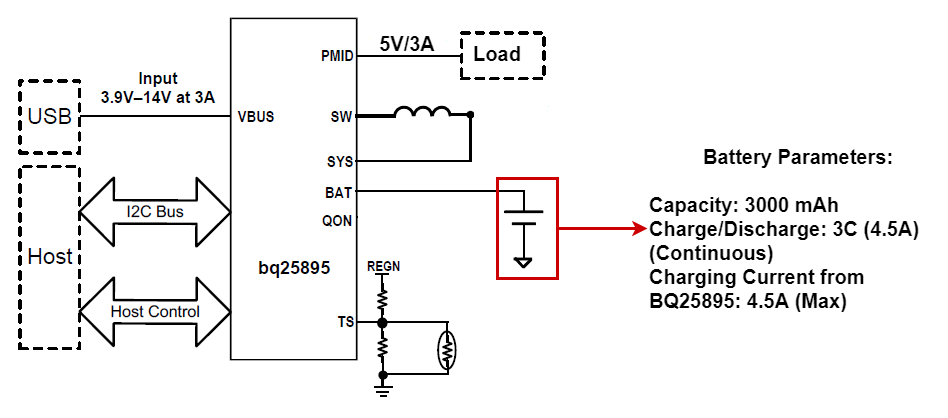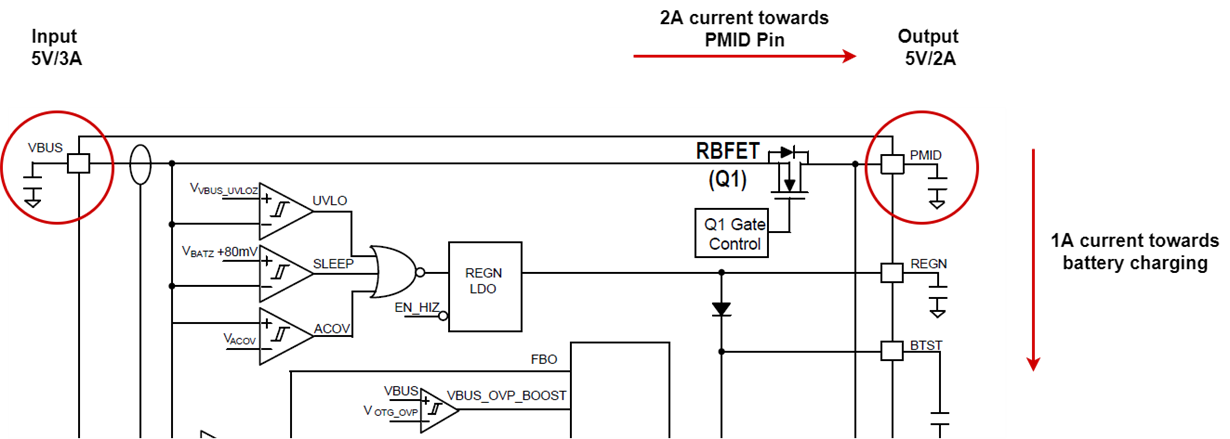Hello,
We are planning to integrate the BQ25895 battery charging IC into one of our products. We have a few queries related to the same.
1) We would like to have an output of 5V/2.7A (13.5W) at the PMID pin (boost converter output) continuously until the battery under-voltage protection isolates the battery from the internal boost converter. The battery protection kicks in at around 3V. Is it possible to have the mentioned output using the battery and the in built boost converter of the BQ25895? or should we go for another boost converter IC?
From what we read in the datasheet of the BQ25895, the internal boost converter will be able to provide a the load with upto 3A at 5V. The output might be limited when the battery is below 3.7V and thus for the same desired output, the current from the battery will need to be more then 4.5A (max discharge current of our selected battery) and in this case, we might not have the desired output power. Is this understanding correct?
We are including an image describing the planned connections and battery parameters.
2) We also plan to have a system which can deliver power to the PMID pin as well as charging the battery in the simultaneous presence of load (on PMID) and 5V at VBUS pin. We will limit the charging current of the battery in this case. For example, if we have 5V/3A supply at VBUS pin, we can let the battery charge at 2A and the remaining power can be delivered to the PMID pin since the "RBFET" will already be on while charging the battery and power on VBUS will also be available on the PMID pin. Is this understanding correct? Please confirm. Also attaching an image of the planned solution.
If this is not feasible, how can we achieve the above use case using the BQ25895. Kindly let us know.
Kindly respond to the above queries. Should you require any information from our side, do let us know.
Regards,
Sarth Dave


